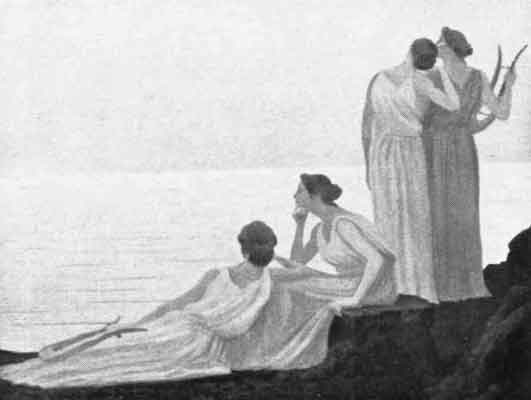|
Greek women : Mathematicians and Philosophers |
|
|

Many Pythagorean women mathematicians (and philosophers in general) are mentioned by
(Θεανώ)
c. 500 BC, Pythagoras' wife , daughter of Brontinus one of the 17 Pythagoreans mentioned by Iamblichus. Work assumed (uncertain because Theano was a common name): Cosmology, Theorem of the golden mean, Theory of numbers, Construction of the universe, On virtue.
Damo of Crotona
(Δαμώ η Κροτωνία)
c. 500 BC daughter of Pythagoras. &ldquoΓεωμετρική &dιδασκαλία“
Arignote of Samos
(Αριγνώτη Σαμία)
c. 500 BC daughter of Pythagoras (569/70 – c. 475 BC)
also author of probably religious texts: Τελεταί &Dιονυσίου (according to Clemens Alexandrinus), Επιγράμματα, &ακχικά, περί ων Μυστηρίων ης Δήμητρας. Her work lost but were available in the period of Porphyrius.
Myia or Myria
(Μυία /Μυρία )
c. 500 BC daughter of Pythagoras, Philosopher and poet
„Η Τρίτη μεσότητα“ one of the 17 Pythagoreans mentioned by Iamblichus
Deino
(Δεινώ)
c. 500 BC
Eloris of Samos
c. 500 BC
Melissa
Μελίσσα
c. 500 BC (some say even 100 AD) student of Pythagoras? who considered to have written &bdquoΟ κύκλος ων εγγεγραμμένων ολυγώνων &aπάντων εστί“
Tymicha
(Τυμίχα Σπαρτιάτις)
c. 500 BC the wife of Milias of Crotona. A Pythagorean, according to Iamblichus one work refers to her and „amicable“ numbers. Assumed to be tortured (even beeing pregnant) by the tyrant Dionysius who killed many other Pythagoreans. She did not tell the secret teachings of the Pythagorean school.
Ptolemais of Cyrene
(Πτολεμαϊς)
c. 500 BC
According to Porphyry (Commentary on Ptolemy's Harmonics) she said that:
„ΕΑΝ ΔΥΟ ΑΡΙΘΜΟΙ ΟΛΛΑΠΛΑΣΙΑΣΑΝΤΕΣ &AΛΛΗΛΟΥΣ ΟΙΩΣΙ ΤΙΝΑΣ, &OmiΙ ΓΕΓΟΜΕΝΟΙ &EpsΞ ΑΥΤΩΝ ΙΣΟΙ&AΛΛΗΛΟΙΣ&EpsΣΟΝΤΑΙ”
which can be translated as the Commutative Rule of multiplication a*b = b*a
Cleobulina of Rhodes
c. 570 BC, daughter of Cleobulus ()